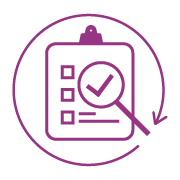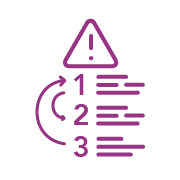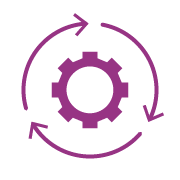Executive Summary:
Despite significant investments in cloud security tools and policies, many organizations remain trapped in an endless cycle: misconfigured and non-compliant infrastructure keeps reappearing, redeployed from the same flawed code. This blog explores breaking that cycle once and for all. Wiz’s Code to Cloud capabilities help security and development teams trace risks back to the source, empowering them to fix issues where they start: in code. The result is a scalable, proactive approach to cloud security that eliminates repeat misconfigurations and accelerates compliance.
🔑 Key Takeaways
- Secure your Cloud with CSPM: Use CSPMs to define and monitor “what good looks like”, based on compliance frameworks like NIST-800-53.
- Shift Left to Prevent Issues Early: Integrate security scanning and compliance checks into CI/CD pipelines to stop risks pre-deployment.
- Fix the Source, Not Just the Symptoms: Tools like Wiz Code to Cloud trace risks back to IaC, breaking the cycle of repeat misconfigurations and enabling code-level remediation.
In today’s fast-paced cloud-native world, the race to innovate often outruns the pace of securing our environments. As organizations scale their cloud infrastructure, the complexity of maintaining configuration compliance across dynamic and distributed systems only increases.
Establishing a secure foundation in the cloud isn’t just about implementing tools—it’s about embedding a mindset and operational framework that prioritizes security from day one. Solutions like Wiz’s Code to Cloud offer the visibility, context, and automation needed to keep innovation friction-free and compliant by design.
That journey typically begins with defining what “good” looks like. For most organizations, this means adopting an industry-standard compliance framework such as NIST 800-53, CIS Benchmarks, or ISO 27001. These standards provide a blueprint for building and maintaining a secure environment. However, merely aligning with these frameworks is not enough—especially in a DevOps culture where infrastructure is code, and changes happen at the speed of automation.
This is where Cloud Security Posture Management (CSPM) becomes critical.
The Role of CSPM in Modern Cloud Environments
CSPM solutions provide continuous visibility into cloud resource configurations, monitoring them against a defined set of compliance and security policies. These tools help identify misconfigurations, policy violations, and potential risks before they are exploited. Think of CSPM as your security radar, always scanning for drift from your defined standards of “good.”
The benefits of implementing CSPM are clear:
CONTINUOUS COMPLIANCE MONITORING
Ensure that your cloud environment remains aligned with security frameworks in real time.
Risk Prioritization
Focus on the most critical misconfigurations that could lead to significant security incidents.
Automated Remediation
Integrate with ticketing or remediation workflows to fix issues faster.
But visibility alone isn’t enough. Security teams must move from reactive to proactive. And that brings us to the concept of “shifting left.”
Shifting Left: Stopping Non-Compliant Code at the Source
Shifting left means moving security earlier in the development lifecycle, catching misconfigurations in code before they ever reach production.
Modern CI/CD pipelines offer a perfect opportunity to embed security checks as part of the developer workflow. When a developer pushes new infrastructure-as-code (IaC), the pipeline can validate the resources against your compliance framework and stop the build if misconfigurations are detected.
This process provides developers with immediate, actionable feedback. Rather than going through a lengthy remediation cycle after deployment, developers can fix issues before they ever reach production. The result? Faster innovation with built-in guardrails.
Shifting left acts like a tourniquet. It stops the bleeding by preventing new misconfigured resources from being deployed in the first place. But as any cloud security practitioner will tell you, that’s only half the story.
The Brownfield Challenge: What About What’s Already Out There?
Even the most robust shift-left strategy doesn’t account for the sprawling set of cloud resources that have already been deployed—many of them through infrastructure code. These “brownfield” resources may have been created before compliance policies were in place, or before visibility tools were implemented. Worse yet, these resources are often still being maintained or redeployed via the same non-compliant IaC templates.
That creates a dangerous loop: non-compliant code leads to non-compliant infrastructure, over and over again.
Identifying and resolving these issues manually is time-consuming and prone to human error. Security teams are often left juggling between scanning tools and code repositories, trying to trace non-compliance back to its origin. This is where tools like Wiz’s Code to Cloud come in.
From Cloud to Code with Wiz
Wiz’s new Code to Cloud capability bridges the gap between runtime and code. It provides a powerful, unified view that connects deployed cloud resources back to the IaC templates that created them. This linkage allows organizations to not only identify non-compliant resources but also pinpoint the exact lines of code responsible for their creation.
For example, a misconfigured S3 bucket in production is flagged as publicly accessible. Instead of filing a ticket or applying a one-off patch, Wiz traces that resource back to a Terraform file in ‘networking/s3.tf’, line 47. Developers receive an annotated Pull Request comment with the context, impact, and a suggested fix they can deploy in 1-click.
With this visibility, remediation becomes exponentially more efficient. Security teams can collaborate directly with developers to correct the code at the source, ensuring that future deployments are compliant by default. This also enables scalable governance—you’re not just fixing individual issues, you’re correcting systemic misconfigurations at their root.
The Path Forward
Implementing CSPM and shifting left are foundational steps in building a secure and compliant cloud environment. But to truly operationalize cloud security, organizations must follow these steps:
- Review which production misconfigurations originate from IaC.
- Implement code-to-cloud tracing to close the loop.
- Align remediation workflows with their IaC ownership model.
That’s the power of going from cloud to code.







